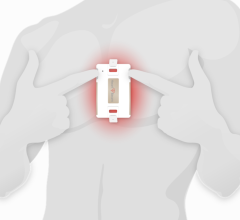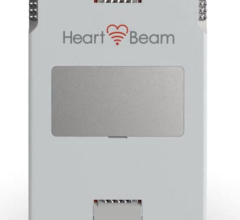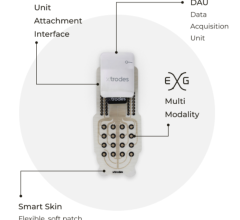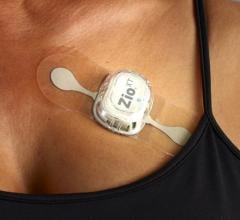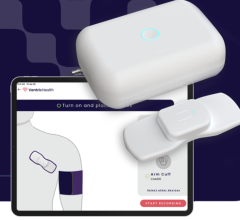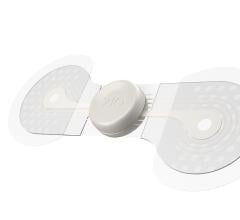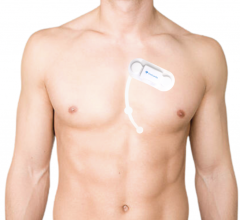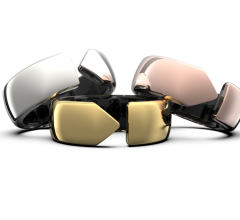May 11, 2017 — A new study shows that the Apple Watch's heart rate sensor, when paired with an artificial intelligence-based algorithm, can detect a serious and often symptomless heart arrhythmia, atrial fibrillation (AF or aFib). The new research uses a deep neural network based on photoplethysmographic (PPG) sensors commonly found in smart watches.
The results of this study were presented at Heart Rhythm 2017, the Heart Rhythm Society’s 38th Annual Scientific Sessions. AF, the most common heart arrhythmia, affects more than 2.7 million American adults. While AF may present symptoms such as palpitations and fatigue, it is often asymptomatic, causing no alarm to doctors or patients and making diagnosis difficult. According to a national survey of 1,000 Americans, one in five Americans owns a wearable fitness tracker such as a smart watch or Fitbit.[1] With the growing number of people using this mobile technology, there is an opportunity to address public health issues such as undiagnosed AF in a way that is convenient for many.
The study enrolled 6,158 users of Cardiogram for Apple Watch into the UCSF Health eHeart Study. Data from those participants — including 139 million heart rate measurements and 6,338 mobile electrocardiograms (ECG) — was used to train a deep neural network to automatically distinguish atrial fibrillation from normal heart rhythm.
The deep neural network was validated against a cohort of 51 patients set to undergo cardioversion, a procedure that restores the heart to a normal rhythm. Each patient wore an Apple Watch for 20 minutes pre-and-post cardioversion. With a 12-lead ECG as a reference standard, the DNN correctly detected atrial fibrillation with an accuracy (c-statistic) of 97 percent, a sensitivity of 98.04 percent, and a specificity of 90.2 percent, higher than previously validated algorithms for detection of AF.
“Our results show that common wearable trackers like smartwatches present a novel opportunity to monitor, capture and prompt medical therapy for atrial fibrillation without any active effort from patients,” said senior author, Gregory M. Marcus, M.D., MAS endowed professor of atrial fibrillation research and director of clinical research for the Division of Cardiology at University of California, San Francisco. “While mobile technology screening won’t replace more conventional monitoring methods, it has the potential to successfully screen those at an increased risk and lower the number of undiagnosed cases of AF.”
The Health eHeart Study seeks to gather more data about heart health from more people than any research study has done before and develop strategies to prevent and treat all aspects of heart disease. Cardiogram seeks to predict and prevent heart disease using artificial intelligence.
The authors of the Apple Watch study are currently working on expanding the number of participants, exploring success rates of self-diagnosis, and testing the ability of the deep neural network to identify other health conditions.
Read the article “How Smartphones and Apps May Change the Face of Healthcare.” This discusses the impact wearable may have in cardiac patient monitoring.
Watch the video “How Wearable Devices Will Fit in Healthcare and Patient Engagement.”
For more information: www.HRSonline.org, www.hrssessions.org
References:
1. PwC Health Research Institute and Consumer Intelligence Series. (2014) “Health wearables: Early days”.
2. Jose M. Sanchez, Brandon Ballinger, Jeffrey E. Olgin, Mark J. Pletcher, Eric Vittinghoff, Emily Lee, Shannon Fan, Nimit Sohoni, Carlos Mikell, Johnson Hsieh, Rachel A. Gladstone, and Gregory M. Marcus. HRS Heart Rhythm 2017 meeting session, “AF Detection and Ablation Outcomes: Answering Questions That Matter to Patients: Detecting Atrial Fibrillation using a Smart Watch – the mRhythm study.” Presented May 11, 2017.

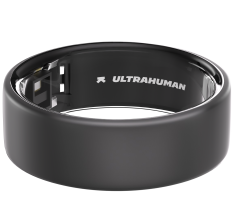
 July 16, 2024
July 16, 2024 
